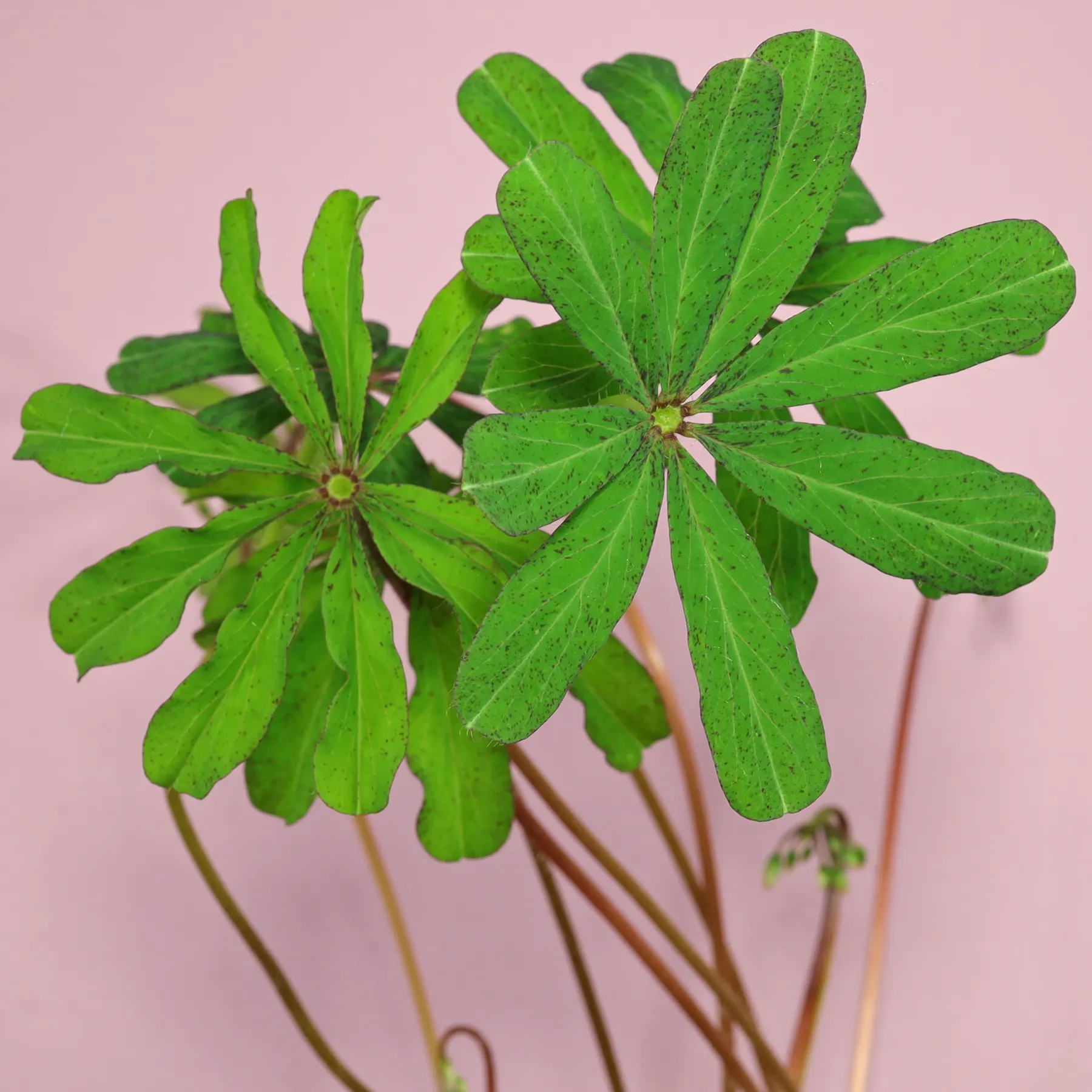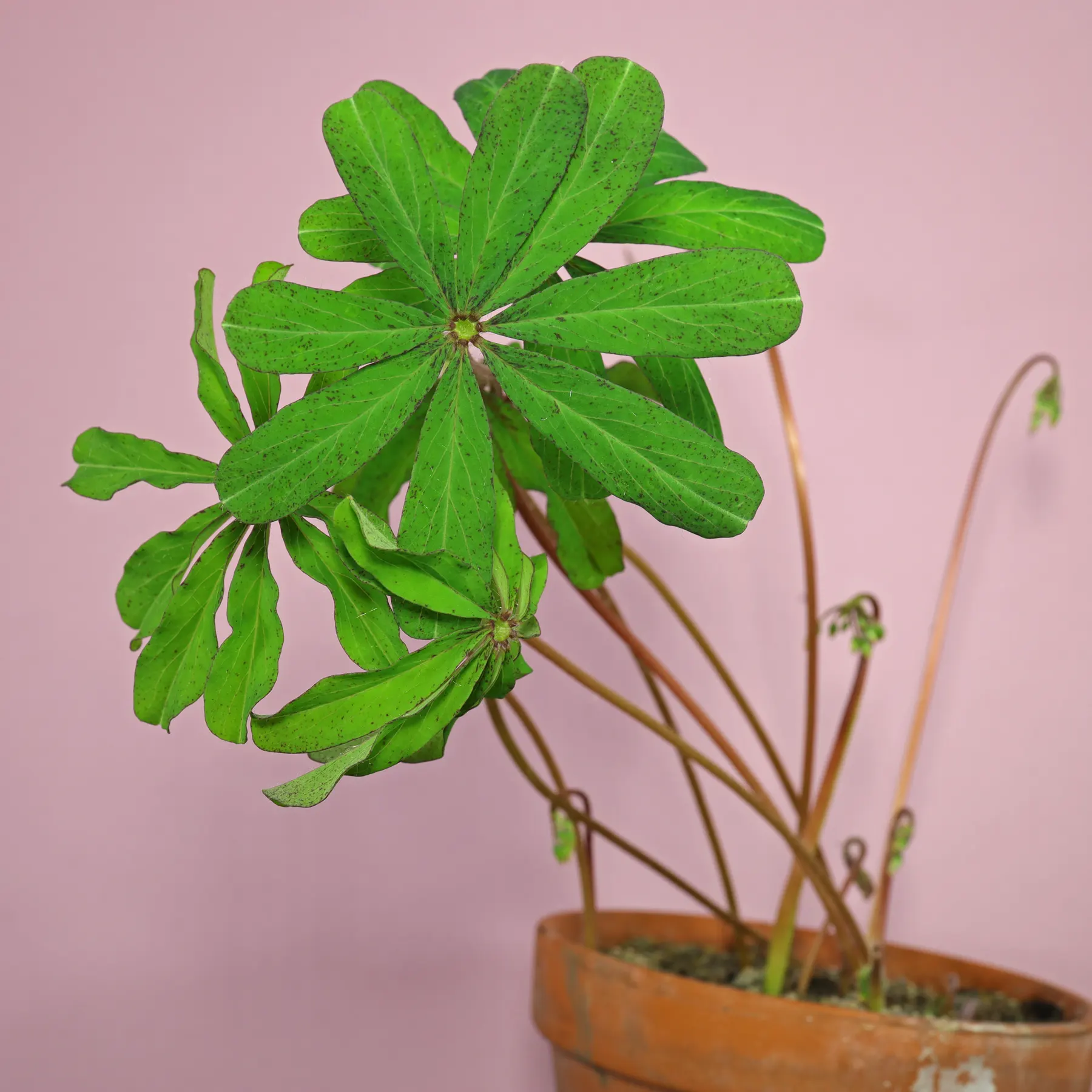Mexican Shamrock, Palm Tree Oxalis
With its mostly erect leaves up to 30 centimeters long, Oxalis lasiandra looks remotely similar to some palm trees. Which is why it is called Palm Tree Oxalis.
Since it is native to Mexico, it is also known as Mexican Shamrock. The lucky clover (Oxalis tetraphylla), popular on New Year’s Eve, originates from Mexico as well.
In the evening hours Oxalis lasiandra puts its leaflets in a sleeping position. They point downwards during the night.

Mexican Shamrock plant care
Lighting
Indoors bright to sunny places are welcome. If the pot is large, so that the soil does not dry out after a few hours, then even the hot summer sun will be tolerated.
In the garden or on the balcony Mexican Shamrock tolerates partial shade. There it should be placed only when frost is no longer expected.

Soil
Permeable substrates, such as peat-free mixtures for houseplants, herbs, vegetables or succulents are ideal.
I use peat-free tomato soil, covered with a layer of old aquarium gravel.

Watering
During the growing and flowering period, the soil should dry only moderately but not dry out.
Feeding
Liquid fertilizer for ornamental plants or vegetables can be given occasionally from spring to autumn. In the first year after repotting Mexican Shamrock does not require fertilization.

Dormancy
In autumn, the growing season ends, the leaves turn yellow and dry up. Now watering is gradually reduced.
The dormant tubers can spend the winter in the pot, wintering can be temperate or cool.
To avoid rotting of the bulbs, the soil should be only slightly moist in winter.
Oxalis lasiandra is not hardy in our area, but if the tubers are planted deep, it can survive mild winters with only short periods of frost. The fact that the ground freezes through, he does not tolerate.
